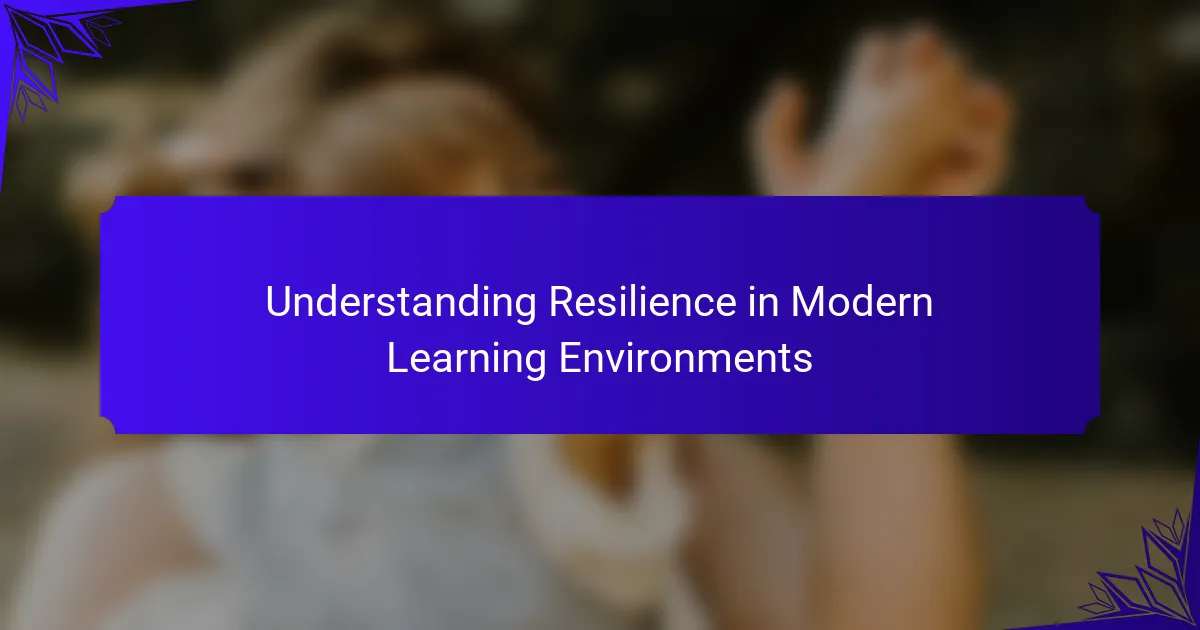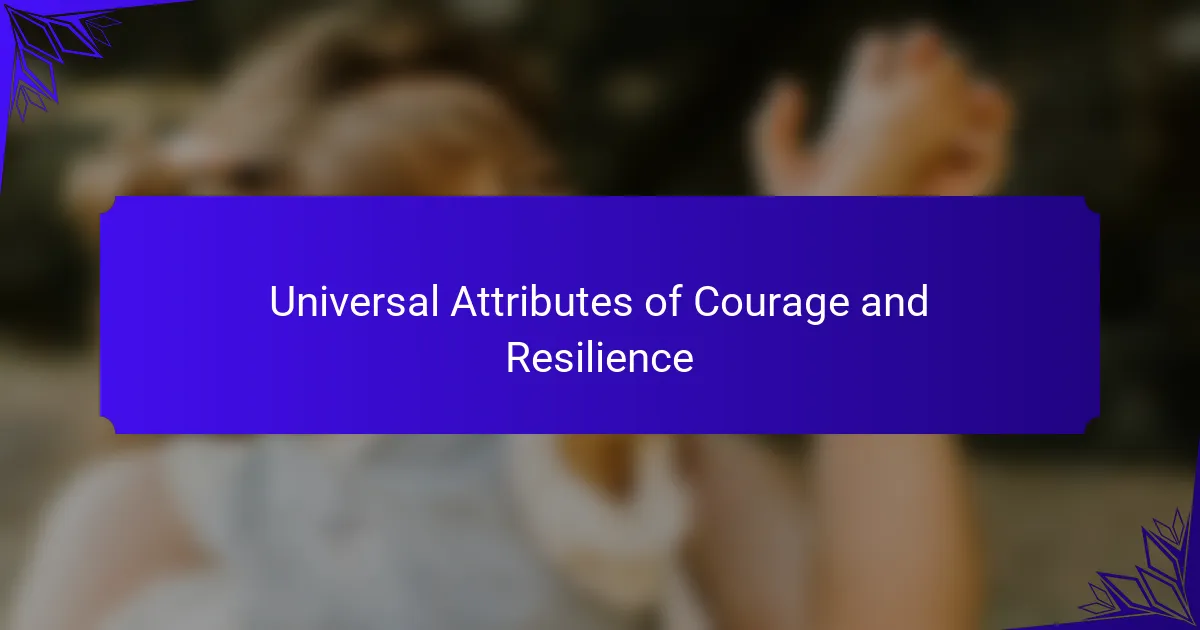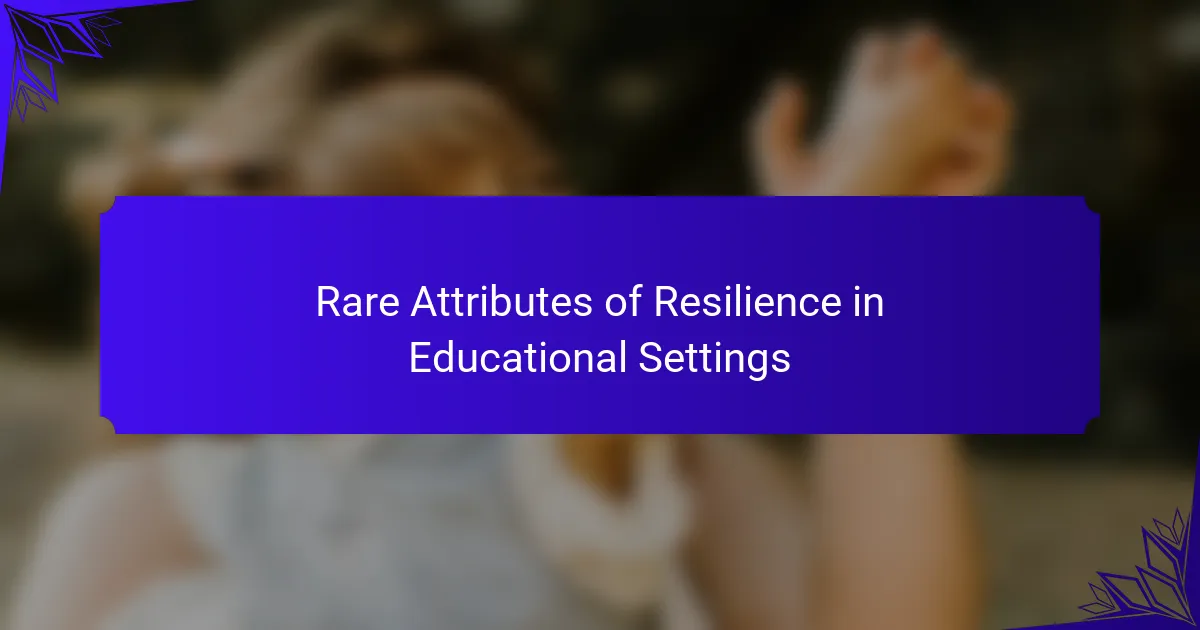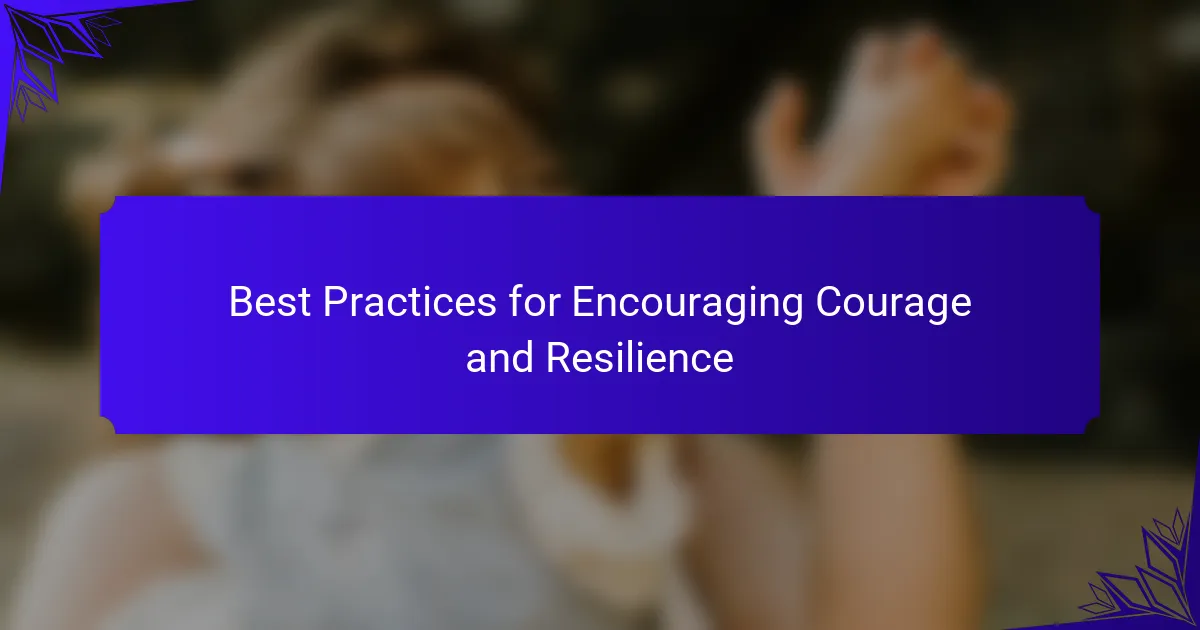Courage empowers individuals to face challenges in learning, fostering resilience and positive conditioning. Understanding how courage enhances motivation and adaptability is essential for personal growth. This article explores the relationship between courage and resilience, the role of positive conditioning in education, and techniques to create supportive learning environments. By cultivating these attributes, learners can overcome fear and thrive academically.

What is Courage and How Does it Relate to Learning?
Courage is the opposite of fear, enabling individuals to face challenges in learning. It fosters resilience and positive conditioning, essential for growth. Courage allows learners to embrace risks, leading to deeper understanding and skill acquisition. Research indicates that a courageous mindset enhances motivation and adaptability, crucial for effective learning.
How is Courage Defined in the Context of Education?
Courage in education is defined as the ability to confront fear and challenges in the learning process. It involves taking risks, embracing failure, and persistently striving for growth. Courage fosters resilience, enabling students to overcome obstacles and adapt to change. This positive conditioning enhances their overall learning experience, encouraging a mindset that values effort over perfection.
What Role Does Courage Play in Overcoming Fear?
Courage plays a crucial role in overcoming fear by enabling individuals to confront and manage their anxieties. It acts as a driving force that fosters resilience, allowing people to take action despite their fears. Courage can be cultivated through positive conditioning, which reinforces the belief that facing challenges leads to growth. This process not only diminishes the grip of fear but also enhances confidence and adaptability in learning environments.

Understanding Resilience in Modern Learning Environments
Courage is the opposite of fear, and resilience is a vital component in modern learning environments. Resilience enables learners to adapt, recover from setbacks, and maintain motivation. In educational settings, fostering resilience involves creating supportive atmospheres that encourage risk-taking and emotional growth. Research shows that resilient learners demonstrate higher academic achievement and better problem-solving skills. Positive conditioning, through affirmations and constructive feedback, further strengthens resilience, promoting a culture of perseverance and success.
What are the Key Components of Resilience?
Resilience comprises several key components: emotional regulation, optimism, social support, adaptability, and problem-solving skills. These elements enable individuals to cope with challenges and recover from adversity effectively. Emotional regulation helps manage stress responses. Optimism fosters a positive outlook, while social support provides essential connections. Adaptability allows for flexibility in facing change, and problem-solving skills enhance decision-making in difficult situations. Together, these components create a robust framework for resilience.
How Can Resilience Be Cultivated in Students?
Resilience in students can be cultivated through supportive environments and skill-building strategies. Encouraging a growth mindset helps students view challenges as opportunities. Teaching coping mechanisms, such as mindfulness and problem-solving, enhances their ability to bounce back from setbacks. Active participation in group activities fosters social connections, which further strengthens resilience.
What Strategies Enhance Resilience in Learning?
Courage enhances resilience in learning by fostering a growth mindset and reducing fear of failure. Strategies include setting achievable goals, embracing challenges, and practicing self-reflection. These approaches build confidence and adaptability, essential for overcoming obstacles in educational environments. Resilience can be further strengthened through supportive peer interactions and constructive feedback, creating a positive learning atmosphere.

The Concept of Positive Conditioning in Education
Courage is the opposite of fear, fostering resilience and promoting positive conditioning in education. Positive conditioning encourages a supportive learning environment, enhancing student engagement and motivation. This approach builds confidence, allowing learners to embrace challenges and develop coping strategies. Research indicates that positive reinforcement significantly improves academic performance, leading to a more resilient mindset.
What is Positive Conditioning and Its Importance?
Positive conditioning refers to the process of reinforcing desired behaviors through positive reinforcement. Its importance lies in enhancing learning experiences and building resilience. Positive conditioning fosters an environment where individuals feel safe to take risks, ultimately leading to increased courage and adaptability in challenging situations. This approach not only improves performance but also nurtures a growth mindset, essential for overcoming fear and embracing new challenges.
How Can Positive Conditioning Influence Student Outcomes?
Positive conditioning can significantly enhance student outcomes by fostering resilience and courage. It promotes a growth mindset, encouraging students to embrace challenges. Research indicates that positive reinforcement improves motivation and academic performance. For instance, students exposed to supportive environments show higher engagement levels and lower dropout rates. This approach cultivates a positive learning atmosphere, essential for developing lifelong learners.

Universal Attributes of Courage and Resilience
Courage and resilience are essential qualities that counteract fear. Courage involves taking action despite fear, while resilience is the ability to recover from setbacks. Both attributes foster positive conditioning in learning environments, enhancing personal growth and adaptability. Courage allows individuals to confront challenges, while resilience ensures they persist through difficulties. Together, they create a powerful framework for overcoming obstacles and achieving success.
What Shared Traits Do Courage and Resilience Exhibit?
Courage and resilience share traits of determination, adaptability, and the ability to overcome challenges. Both exhibit a strong mindset that embraces change and perseveres despite adversity. Courage often initiates action, while resilience sustains it through ongoing difficulties. Together, they foster personal growth and emotional strength.

Unique Attributes of Courage in Learning
Courage in learning is characterized by unique attributes that empower individuals to overcome challenges. These attributes include the ability to embrace vulnerability, persistence in the face of obstacles, and a growth mindset that views failures as learning opportunities. Courage fosters resilience, enabling learners to adapt and thrive in diverse educational environments. By cultivating these attributes, individuals can transform their learning experiences, leading to greater confidence and success.
What Distinguishes Courageous Learners from Others?
Courageous learners distinguish themselves through their ability to embrace challenges and persist despite difficulties. They exhibit resilience, viewing setbacks as opportunities for growth. This positive conditioning fosters a mindset that prioritizes learning over fear. Unlike others, they actively seek knowledge and experiences, demonstrating a unique attribute of intrinsic motivation. Their courage enables them to take risks in their learning journey, ultimately leading to deeper understanding and mastery of new skills.

Rare Attributes of Resilience in Educational Settings
Rare attributes of resilience in educational settings include adaptability, emotional regulation, and a growth mindset. These characteristics enable students to effectively navigate challenges, maintain motivation, and cultivate a positive learning environment. Adaptability allows learners to adjust strategies in response to setbacks. Emotional regulation helps manage stress and anxiety, fostering a conducive atmosphere for learning. A growth mindset encourages the belief that abilities can be developed through effort, leading to perseverance and success. Collectively, these rare attributes contribute to a robust framework for resilience, enhancing educational outcomes.
What Unique Characteristics Define Resilient Students?
Resilient students exhibit unique characteristics such as adaptability, perseverance, and a growth mindset. They embrace challenges and view failures as opportunities for learning. Resilient students demonstrate strong emotional regulation, allowing them to manage stress effectively. They also possess a supportive social network, which enhances their ability to cope with academic pressures. These traits contribute to their overall success in learning environments.

How Can Educators Foster a Courageous Learning Environment?
Educators can foster a courageous learning environment by encouraging open communication and risk-taking. This approach builds resilience and promotes positive conditioning among students. Creating a safe space where mistakes are viewed as learning opportunities enhances students’ courage to engage and express themselves. Regular feedback and support further empower learners to overcome fear and embrace challenges.
What Techniques Encourage Courage in the Classroom?
Encouraging courage in the classroom involves techniques that foster resilience and positive conditioning. Strategies include creating a supportive environment, promoting risk-taking, and modeling vulnerability. These methods help students confront fear, enhancing their learning experience. Providing constructive feedback and celebrating small successes reinforce their courage. Engaging activities that challenge students while ensuring they feel safe can significantly boost their confidence.
How Can Educators Measure Student Resilience?
Educators can measure student resilience through observations, surveys, and performance assessments. These methods assess how students cope with challenges, adapt to setbacks, and maintain motivation. For example, resilience surveys can quantify students’ self-reported coping strategies. Performance assessments can reveal how students handle academic pressures. Tracking these attributes provides insights into students’ resilience levels.

Practical Applications of Positive Conditioning Techniques
Positive conditioning techniques enhance learning by fostering courage and resilience. These methods create a supportive environment that encourages risk-taking and experimentation. For instance, positive reinforcement boosts confidence, allowing learners to confront challenges without fear. Techniques such as goal setting and constructive feedback further develop resilience, enabling individuals to persist through difficulties. By integrating these approaches, educators can cultivate a mindset that values growth and adaptability, essential for effective learning.
What are Effective Methods for Implementing Positive Conditioning?
Effective methods for implementing positive conditioning include establishing clear goals, providing consistent reinforcement, and creating a supportive environment. Setting specific, achievable objectives helps learners focus their efforts. Consistent reinforcement, such as praise or rewards, encourages desired behaviors and strengthens learning. A supportive environment fosters resilience by allowing individuals to take risks without fear of failure. These approaches enhance courage and resilience, key components in overcoming fear.
What Common Mistakes Should Educators Avoid in Conditioning?
Educators should avoid common mistakes that hinder positive conditioning, such as fostering a fear-based environment, neglecting individual student needs, and failing to provide constructive feedback. Creating a supportive atmosphere encourages courage and resilience, essential for effective learning. Additionally, overlooking the significance of celebrating small successes can diminish motivation. Lastly, not modeling resilience may prevent students from developing their own coping strategies.

Best Practices for Encouraging Courage and Resilience
Courage and resilience can be encouraged through positive conditioning techniques. These practices include fostering a growth mindset, promoting self-reflection, and creating supportive environments.
Growth mindset emphasizes the belief that abilities can be developed. This perspective helps individuals face challenges with confidence. Self-reflection allows learners to assess their experiences and learn from setbacks. Creating supportive environments involves providing encouragement and understanding from peers and mentors.
Incorporating these practices leads to improved emotional strength and adaptability. Research indicates that resilience is linked to better performance and overall well-being. By nurturing these qualities, individuals can effectively combat fear and thrive in learning situations.
What Actionable Strategies Can Be Applied Immediately?
To combat fear effectively, implement strategies that foster courage and resilience. Start by practicing positive self-talk to shift your mindset. Engage in small, manageable challenges that push your comfort zone. Establish a supportive network to share experiences and gain encouragement. Lastly, visualize success to reinforce positive conditioning in learning.


